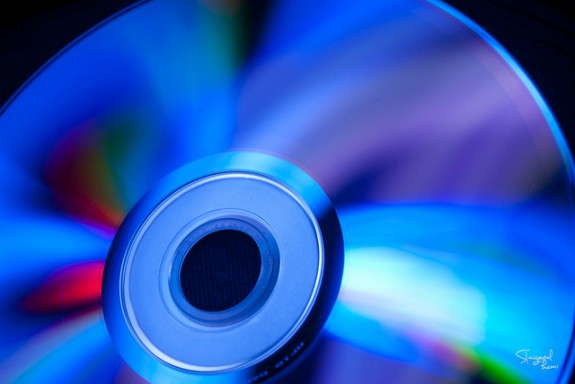All of Facebook Could Fit on 100 of These Futuristic DVDs
This new DVD could probably hold every file you’ve ever made

Photo Ravigopal Kesari
Every single day, says IBM, we humans collectively pump out “2.5 quintillion bytes of data — so much that 90% of the data in the world today has been created in the last two years alone.”
From copying photos to drafting books to updating our Facebook statuses the pace of data creation is astounding. According to NBC last year, Facebook alone accounts for around 100 petabytes of data—more than 100,000 terabytes. For context, consider that new high-end laptop will give you around a terabyte of storage.
Storing all this information hasn’t proven to be so huge of a challenge—hard drives grow every year, and vast server farms can hold billions upon billions of bytes. But one new development is rethinking our old friend the DVD, and could make storing even huge things like the entirety of Facebook trivially easy. In a new study a team of Australian researchers describe a new technique that let them cram a petabyte—a full 1,000 terabytes—onto a single optical disk. “This is equivalent of 10.6 years of compressed high-definition video or 50,000 full high-definition movies,” say the scientists. Maybe it’s time for Apple to rethink optical drives.
To make their new high-storage discs, all the researchers had to do was figure out how to make a laser beam that was thinner than half the width of a wave of light–less 500 nanometers wide. Writing for The Conversation, three of the study’s authors describe how it works:
The operation of optical data storage is rather simple. When you burn a CD, for example, the information is transformed to strings of binary digits (0s and 1s, also called bits). Each bit is then laser “burned” into the disc, using a single beam of light, in the form of dots.
The storage capacity of optical discs is mainly limited by the physical dimensions of the dots.
… the diameter of a spot of light, obtained by focusing a light beam through a lens, cannot be smaller than half its wavelength – around 500 nanometres (500 billionths of a metre) for visible light… sets up a barrier for any efforts from researchers to produce extremely small dots – in the nanometre region – to use as binary bits.
By using two lasers, one that was tuned to cancel out or “negatively interact with” part of the other, they could make extremely tiny dots—dots so small that they could cram way more of them onto a same-sized disc. The scientists are also working on a designing a new material that can handle such small dots without becoming uselessly fragile.
The new optical disks are still far, far away from being commercially viable. But having such huge storage capacity in something as durable and portable as a DVD could accelerate the pace of our new era of big data. As we’ve written before, it’s still cheaper and easier to throw a hard drive in the mail than it is to send a big set of data through the internet.
More from Smithsonian.com:
The Fastest Way to Send Big Chunks of Data Is Through the Mail, Not the Internet
/https://tf-cmsv2-smithsonianmag-media.s3.amazonaws.com/accounts/headshot/smartnews-colin-schultz-240.jpg)
/https://tf-cmsv2-smithsonianmag-media.s3.amazonaws.com/accounts/headshot/smartnews-colin-schultz-240.jpg)